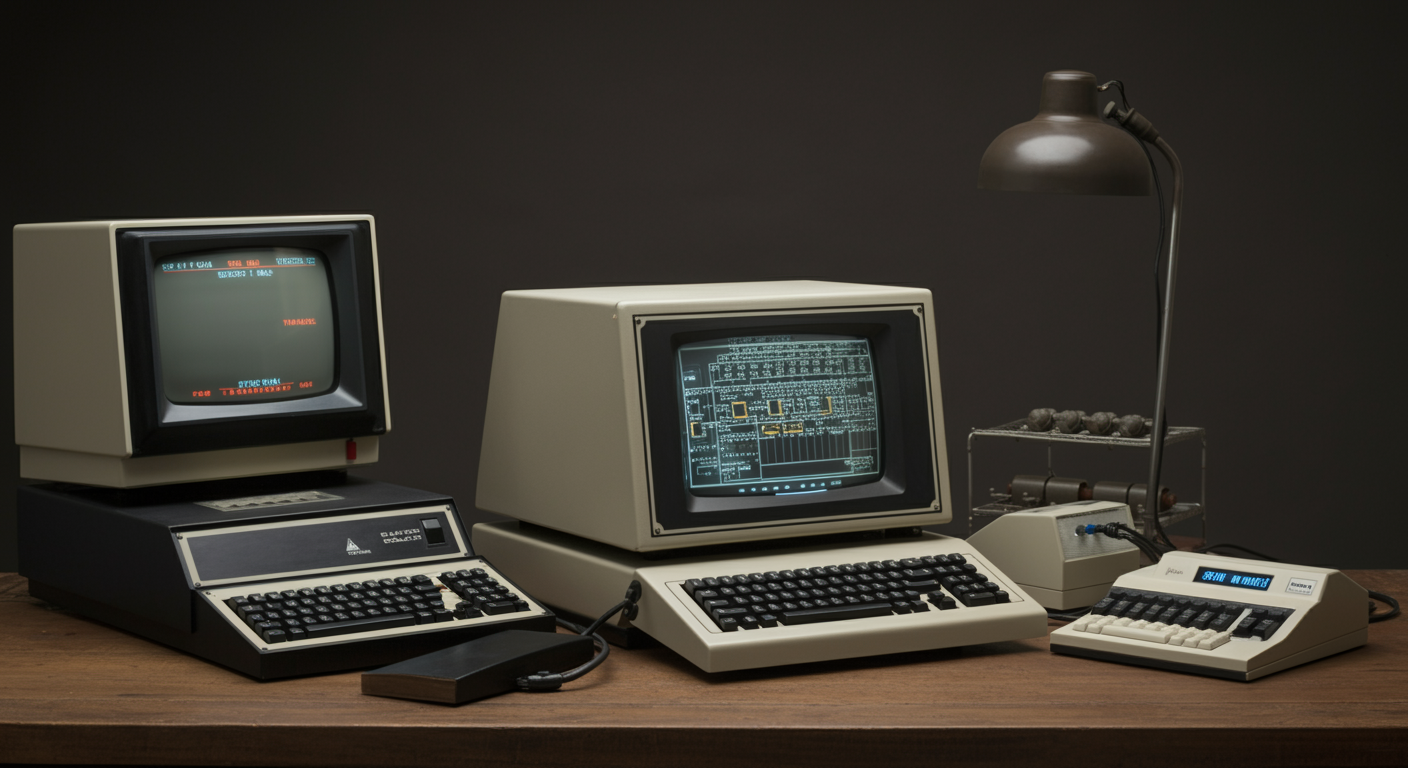The History of Computers: From ENIAC to Modern PCs
The History of Computers: From ENIAC to Modern PCs
The evolution of computers is a fascinating journey that spans decades, transforming from room-sized machines with limited capabilities to the sleek, powerful devices we rely on today. This progression reflects human ingenuity, innovation, and the relentless pursuit of efficiency. Let’s explore the key milestones in computer history, from the early days of ENIAC to the modern personal computer.

The Birth of Electronic Computing: ENIAC (1940s)
The story of modern computers begins with the Electronic Numerical Integrator and Computer (ENIAC), developed in 1945 at the University of Pennsylvania. ENIAC was a massive machine, weighing over 27 tons and occupying an entire room. Unlike earlier mechanical computers, ENIAC used vacuum tubes to perform calculations at unprecedented speeds—thousands of times faster than human computers.
Though ENIAC was revolutionary, it had limitations. Programming it required manually rewiring circuits, a tedious and time-consuming process. Despite this, ENIAC laid the foundation for electronic computing, proving that machines could handle complex mathematical tasks.
The Transition to Transistors (1950s–1960s)
Vacuum tubes were bulky, power-hungry, and prone to failure. The invention of the transistor in 1947 by Bell Labs marked a turning point. Transistors were smaller, more reliable, and consumed far less power. By the 1950s, computers like the IBM 700 series began incorporating transistors, making them more efficient and accessible to businesses and research institutions.
This era also saw the development of high-level programming languages, such as FORTRAN (1957), which made coding more intuitive. Computers were no longer just for military or scientific use—they began aiding businesses in data processing and payroll management.
The Rise of Integrated Circuits and Microprocessors (1960s–1970s)
The next leap came with the integrated circuit (IC), which packed multiple transistors onto a single silicon chip. This innovation, pioneered by engineers like Jack Kilby and Robert Noyce, drastically reduced the size and cost of computers.
In 1971, Intel introduced the first microprocessor, the 4004, a complete CPU on a single chip. This breakthrough paved the way for smaller, more affordable computers. Soon after, companies like Apple and IBM began developing machines for personal use.
The Personal Computer Revolution (1980s–1990s)
The 1980s marked the dawn of the personal computer (PC) era. The IBM PC (1981) and Apple Macintosh (1984) brought computing into homes and offices. These machines featured graphical user interfaces (GUIs), making them more user-friendly than earlier command-line systems.
Software also evolved rapidly. Microsoft’s MS-DOS and later Windows o.perating systems dominated the market, while applications like word processors and spreadsheets became essential tools for productivity.
Modern Computing: Power in Your Pocket (2000s–Today)
Today’s computers are exponentially faster, smaller, and more versatile than their predecessors. The shift from desktops to laptops, tablets, and smartphones has made computing truly portable. Advances in multi-core processors, solid-state drives (SSDs), and AI-powered software have redefined what computers can do.
Cloud computing and high-speed internet have further transformed how we interact with technology, enabling real-time collaboration and access to vast amounts of data from anywhere in the world.
Conclusion
From the colossal ENIAC to the pocket-sized smartphones of today, computers have undergone a remarkable transformation. Each innovation—transistors, microprocessors, GUIs, and the internet—has built upon the last, shaping the digital world we live in. As technology continues to evolve, one thing remains certain: the history of computing is far from over.
What’s your favorite milestone in computer history? Share your thoughts in the comments.